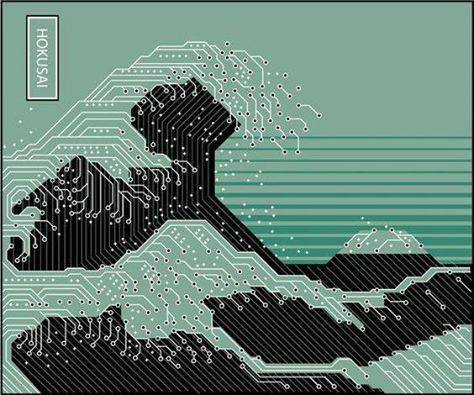Lian Hearn's Blog, page 9
May 8, 2016
Emperor of the Eight Islands Launches a Different Kind of Epic Fantasy Saga
May 6, 2016
chaosophia218:
Baku - The Legend of the Dream Eater.The Baku,...
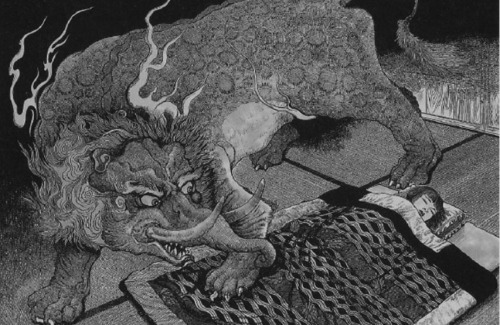
Baku - The Legend of the Dream Eater.
The Baku, also known as the ‘Dream Eater’, is a mythological being or Spirit in Chinese and Japanese folklore which is said to devour nightmares. The Baku cannot be summoned without caution, however, as ancient legends say that if the Baku is not satisfied after consuming the nightmare, he may also devour one’s hopes and dreams.
Tales of the Baku devouring nightmares originated in Chinese folklore, and later appeared in Japanese folklore between the 14th and 15th century, in what was known as the Muromachi period. While the Baku is a spiritual being, it has a well-defined appearance. It takes on the form of a chimera – a mythological beast comprised of a variety of parts from other animals. The Baku is typically depicted with a bear’s body, an elephant’s nose, a tiger’s feet, an oxen tail, and rhinoceros eyes. According to legend, the Baku was created by the spare pieces that were left over when the gods finished creating all other animals.
Legend has it, that a person who wakes up from a bad dream can call out to Baku. A child having a nightmare in Japan will wake up and repeat three times “Baku-San, come eat my dream. Baku-San, come eat my dream. Baku-San, come eat my dream.” Then, Baku will come into the child’s room and devour the bad dream, allowing the child to go back to sleep peacefully. However, calling to the Baku must be done sparingly, because if he remains hungry after eating one’s nightmare, he may also devour their hopes and desires as well, leaving them to live an empty life. The Baku can also be summoned for protection from bad dreams prior to falling asleep at night. To this day, it remains common for Japanese children to keep a Baku talisman at their bedside.
May 4, 2016
artistsanimals:
Title: Haiku Poem by BusonArtist: Saitô...

Title: Haiku Poem by Buson
Artist: Saitô Shôshû
Origin: Japanese
Medium: Color lithograph; ink on card stock
Size: 13.8 x 8.8 cm (5 7/16 x 3 7/16 in.)
Source: Museum of Fine Arts Boston
May 3, 2016
weremagnus:
Happy Tengu Tuesday!
Cartoon Tengu!
May 1, 2016
fairytalemood:
“Fox Fires on New Year’s Eve at the Garment...
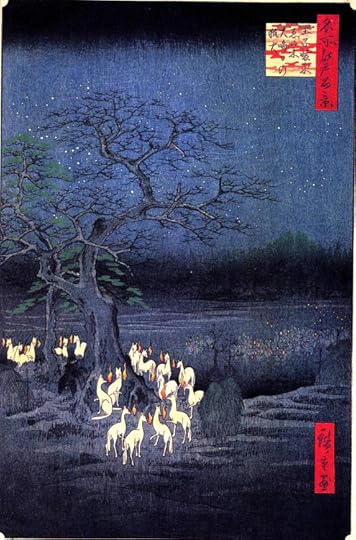
“Fox Fires on New Year’s Eve at the Garment Nettle Tree at Oji” by Utagawa Hiroshige (1857)
April 29, 2016
The World of ShikanokoFind the first book (available now), or...
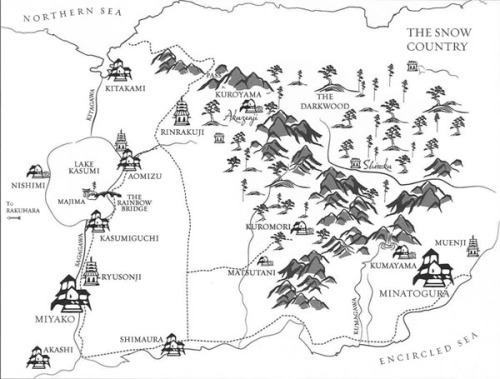
The World of Shikanoko
Find the first book (available now), or preorder the rest of the series (all publishing in 2016)!
April 28, 2016
preservedabnormal:
Tengu
Tengu are impish mountain...
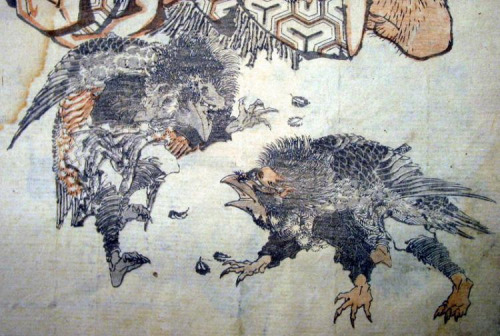
Tengu
Tengu are impish mountain goblins that play tricks on people, featured in countless folktales and considered purely evil until about the 14th century. They were originally depicted as birdlike, with wings and beaks, though now the beak is often replaced with a comically large nose. They are known to lead people away from Buddhism, tie priests to tall trees and towers, start fires in temples, and kidnap children. Many legends say the tengu were hypocritical priests who must now live the rest of their lives as mountain goblins as punishment.
April 27, 2016
fsgbooks:
“Yuko came to mind as soon as I started reading...
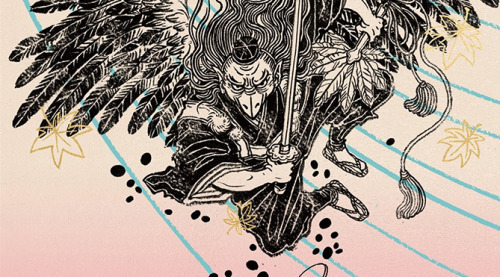
“Yuko came to mind as soon as I started reading these stories. Her illustration style pairs perfectly with Lian Hearn’s writing because it blends traditional Japanese style with surrealism.”
Read a conversation between book designer and artist Yuko Shimizu and Alex Merto on the design of Lian Hearn’s The Tale of Shikanoko series!
a-beautiful-ghost:
神奈川沖浪裏 (The Great Wave off Kanegawa)...
April 26, 2016
The Tale of Shikanoko: Emperor of the Eight Islands is in stores...

The Tale of Shikanoko: Emperor of the Eight Islands is in stores today!
Find it online here, here, and here, or find it in stock at your closest indie bookseller!
Lian Hearn's Blog
- Lian Hearn's profile
- 1820 followers



